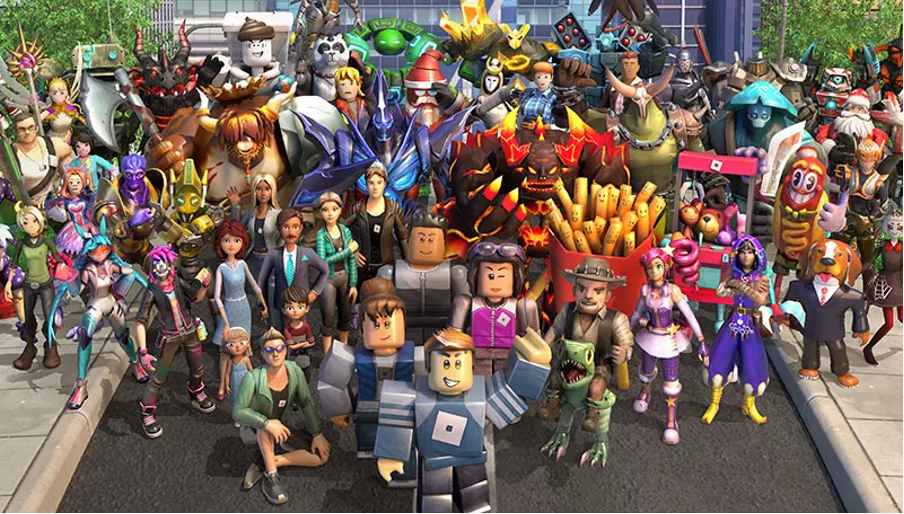Your cart is currently empty!
The Arrival of the Metaverse

Ally McBeal, an American drama that was popular in the 2000s, has an episode about a woman who chooses euthanasia because of her “dream” family. The story starts with a woman with an absurd demand of living her life in a dream with her “dream” family through euthanasia instead of her reality where she is alone. Usually, dreams are not continuous, but the woman can continue the same dream when she sleeps and live a totally different life. This episode is especially memorable because the story is very relatable to the element of “Metaverse” in the 21st century. New technologies are shifting our imagination closer to reality.

Metaverse has become a buzzword in the IT industry recently. The Metaverse is a 3-dimensional virtual world where social, economic, and cultural activity takes place. Virtual reality has become more popular in the last few years, so many companies are working on making the Metaverse a reality. Facebook, Microsoft and NVIDIA are all working on a version of the Metaverse. Facebook has changed their company name to Meta, Microsoft is working on “enterprise Metaverse,” and NVIDIA is working on a project they’ve named Omnibus.
Why Is the Metaverse So Popular?
Metaverse is the next step in virtual reality (VR). While VR allows you to immerse yourself in gameplay through an avatar, the Metaverse will allow you to engage in a range of social and cultural activities.
Millennials will remember a popular online chat room, Habbo Hotel, that allowed users to create rooms, personalize their avatar, and engage in conversations and games with other users. Habbo Hotel and chat rooms of the early 2000s like Club Penguin were the predecessors of the Metaverse. They allowed a certain amount of personalization and social activities, but the Metaverse promises an immersive experience through the use of VR technology.
The Metaverse that tech giants like Meta (formerly Facebook) envision is like an online world where users can work in virtual offices, attend virtual concerts, and even walk virtual pets with their friends. The Metaverse is so popular because it represents breaking down the final barrier in globalization, location. Location will no longer be an issue in catching up with friends or attending events. You can do all of those things from the comfort of your own home.
Not just for gamers, the Metaverse provides more freedom in communication and life.
A lot of dystopian sci-fi books and movies have examined this concept of a “second-life.” Think about the Matrix movies, Ready Player One, or Snow Crash, where the term the Metaverse originated. Virtual reality gaming allows players to immerse themselves in gameplay, but the Metaverse will allow people to conduct life in a virtual environment. Many experts believe that Covid-19 was a catalyst to the sudden interest in the Metaverse. Since reality was restricted due to the pandemic, communication moved largely online.
To look at where it all began, we need to look at online gaming. Two great examples of this are Zepetto and Roblox.

Zepetto
Zepetto is an AR avatar-based service created by Naver Snow. It was derived from their camera application Snow, which allows users to turn selfies into avatars. Zepetto was launched in 2018 and has grown exponentially since then, surpassing 200 million users in 2021. In 2019, Zepetto even ranked first in the app stores of 37 countries.
The functionality of Snow allows users to create 3D avatars by taking photos of their faces. Deep learning-based facial recognition software creates an avatar that they can then customize with skin, eye, and hair color. Once the avatar has been created, users play games and communicate on social media through Zepetto.
Zepetto has a circular structure that allows users to create anything they can imagine. Avatars function as if they were real people with personalities and can participate in activities like in real life. In Zepetto, users can:
- Travel
- Participate in dance competitions
- Cook for friends
- Tour a house
Users can record their activities and share them on their social media feeds within Zepetto. This has been done over 1 billion times to date.

Roblox
Roblox differs from Zepetto in that it concentrates on games rather than social functions. Roblox boasts 43 million daily active users and is particularly popular with teenagers in the US. It was released in 2006 and now operates in over 180 countries, and over half of American teenagers under the age of 16 use Roblox.
The driving force behind Roblox is “openness.” Unlike other gaming platforms, users can create and distribute their own games on the Roblox platform. The Roblox environment makes it easy for people to create games using simple coding, and elementary school students in particular use this feature with gusto. There are as many as 50 million games on Roblox, and more than 10 million games are played every month.
While the most popular games are provided by game companies, the individual users also create games and earn money through contributions.
The Metaverse: Removing Daily Commutes
The Covid-19 pandemic’s remote work requirements identified another use of the Metaverse. While technology makes it easier to work from home and to communicate with colleagues, the work environment was lacking. A major benefit of working from an office is the ability to collaborate and network with colleagues. Remote work adds barriers to those activities, and many people who started new roles in the pandemic reported that they didn’t know any of their colleagues.
It seems that flexible work arrangements are popular, with many workers wanting the option of working from home in order to reduce the cost and time of a daily commute. However, the Metaverse will be able to bridge the gap and allow more connection throughout the workday.
Virtual workplaces are already in use across the world. eXP Realty, a US real estate broker, has been using a virtual office since 2009. They needed to cut costs after the housing crisis but didn’t want to lose the benefit of sharing knowledge around the office. While it took a little while to adjust to moving around in a virtual space, realtors quickly took to the platform. eXP Realty has even implemented office etiquette guidelines for their virtual office like respect closed office doors. Open office doors in their virtual workspace mean colleagues can enter freely to collaborate.

How Will the Metaverse Look in the Future?
So far, it is hard to tell because the Metaverse is in very early stages. Currently, users explore virtual spaces through an avatar and can use text or voice chat to communicate with other avatars. When tech leaders speak about the Metaverse, they talk about creating realistic experiences such as virtual concerts and product launches. But so far, it is hard to see how that can be achieved in a realistic way.
The one thing we do know is that a lot of investment is going into creating the Metaverse and there is a lot of interest from people and companies in creating this virtual world. We predict that the Metaverse will bring wide scale change and that people will spend increasing amounts of time in the Metaverse, both professionally and in their personal time. The Software Policy Research Institute predicted that Metaverse platform B2C games and social networking would gain mainstream attention in 2020 and 2021, and from that point, adoption would spread to B2B and B2G areas. PricewaterhouseCoopers (PwC) predicted that the Metaverse will be worth 300 trillion in the next five years as companies are discussing Metaverse real estate and corporate opportunities.
We believe that a growth focus in the Metaverse will improve the realism of the content. This is something that tech companies are already working on as a marketing differentiator. So far, the Metaverse will combine AR, VR, and MR (Mixed Reality) technology to allow users to move around the virtual world, seeing through an HMD (head-mounted display.) There has been talk of incorporating other senses such as touch and smell that will relate to the visual content. Another prediction is that companies can create avatars for AI technology, called MetaHumans, who can interact with the virtual world and avatars as a human-controlled avatar would.
All we can say for sure is that we are excited about the possibilities the Metaverse will bring to the world both in terms of personal and business impact. We advise companies to watch out for new developments so they can be quick to jump onboard trends and adapt to the virtual world.
Communicating Knowledge, Saltlux.
- Before Meta, there was Habbo: How social games laid the framework for the metaverse
- The virtual office of the future might look a lot like your favorite video game
The Arrival of the Metaverse was originally published in Chatbots Life on Medium, where people are continuing the conversation by highlighting and responding to this story.